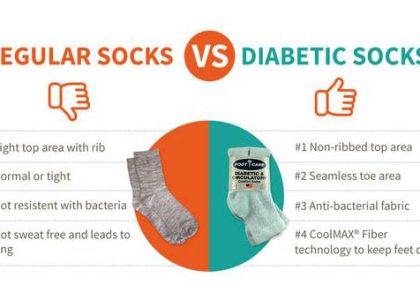Dr Jordan Sudberg explains that physical therapy is often called PT. It diagnoses and treats movement issues. Physical therapists assess patients and then create individualized plans with them using various techniques to improve function and mobility, pain relief, and quality of life. Physical therapy is not passive. Many programs offer to strengthen and stretch exercises that patients can do at home.
How It Works
Physical therapy does not treat symptoms. It aims to fix the root cause of pain and movement restrictions to provide long-term relief. Poor posture and weak core muscles could be the cause of back pain. To alleviate arthritis-related knee pain, strengthening the muscles around your joint can help.
Dr Jordan Sudberg may offer hands-on treatment to treat a problem area. It could include ultrasound therapy, dry needling, and manipulation of the skin. This last technique uses a needle without medication to insert through the skin into the muscles to activate trigger points or release pain.
Therapists prescribe assistive devices, such as braces for a knee injury or splints to treat carpal tunnel syndrome.
Colleen Louw is a physical therapist and spokesperson for the American Physical Therapy Association (APTA). She also serves as the program director for Therapeutic Pain Specialist Certification for Evidence in Motion. “Physical therapists increasingly adopt a biopsychosocial approach to treating patients.” Our goal is to educate patients to help them understand their pain and decrease their fear of moving to return to everyday life.
Jordan Sudberg offers Chronic Pain Symptom Relief
Louw says that physical therapists see a lot of chronic pain conditions, including lower back pain, fibromyalgia, and knee arthritis. Physical therapy is a great treatment option that can reduce opioid overuse. The Centers for Disease Control and Prevention has recommended physical therapy as one of the first options for pain management in its draft guidelines. According to the draft guidelines, there is strong evidence that exercise therapy (a popular modality in physical therapy for back pain, fibromyalgia, and hip or knee osteoarthritis) reduces pain and improves function within two to six months.

A scoping review revealed a link between early PT interventions in pain conditions such as lower back pain, joint, and orthopedic surgery recovery, and a lower likelihood that a patient would be prescribed opioids.
Numerous studies have shown that physical therapy is effective in treating certain chronic pain conditions.
Knee Pain: A study showed that patients suffering from osteoarthritis of their knees who had received steroid injections simultaneously as those who had physical therapy experienced less pain and functional disability for a year.
Sciatica: A study showed that patients suffering from sciatica back pain after physical therapy following their initial diagnosis had less disability and more intense back pain than those who weren’t.
Chronic Pelvic Pain Physical therapy can also treat persistent pelvic pain. Patients who had suffered from gynecological carcinomas were examined and found that pelvic floor physical therapy decreased pain, improved sexual function, and reduced symptoms.
Jordan Sudberg Offers General Health And Wellness Benefits
There are many uses for physical therapy, including post-surgical recovery and fall prevention. Physical therapists can treat many health problems, including stroke recovery, pelvic pain, and chronic fatigue syndrome. More Read: A Century of A&W
PT’s primary goal is to help people overcome obstacles that keep them from becoming more active. It is crucial because research has shown that increased exercise and physical activity can improve various health conditions, including mental and physical ones. It also reduces overall mortality. Louw says that movement is medicine.
How To Use It
Licensed physical therapists can provide physical therapy. According to the APTA, your primary care provider can refer you, or you can call a physical therapist without a referral.
Are PT Fees Expensive? Does My Health Insurance Cover PT?
Many insurance policies, including Medicare, Workers’ Compensation, and Private Insurers, cover physical therapy services that have been deemed medically necessary. These services are provided by licensed physical therapists or licensed physical therapist assistants under the supervision of a physical therapist.

What To Expect
Comfortable clothing allows you to move and stretch freely during your appointment. The physical therapist will ask you questions about your current condition and health history during your first appointment. The physical therapist will conduct a thorough exam, which includes a review of your strength, flexibility, balance, and other symptoms. They may also screen for signs and symptoms like unusual warmth or loss of sensation, which could indicate a spinal nerve problem and require referral to a physician.
They might use their hands to touch the area of concern. The physical therapist may ask you to do everyday activities such as standing or walking to observe how your body moves. Your physical therapist will review your goals and create a treatment plan with you after the exam.
You will usually get homework in addition to your sessions with your physical therapist. Your physical therapist might show you exercises to practice or coach you on how to do your daily activities more effectively.
Take into account
Dr Jordan Sudberg said that many people worry that physical therapy will cause pain. People with chronic pain often fear moving. Louw says that people with chronic pain are often afraid to exercise because they fear it will worsen their condition. Louw says that trusting the patient is the first step. Talk to your physical therapist if you feel discomfort or pain. They may be able to modify your treatment or recommend strategies like icing to reduce swelling. Louw says Louw might suggest that a patient suffering from knee arthritis exercises in a pool to help reduce the strain on the joint.









